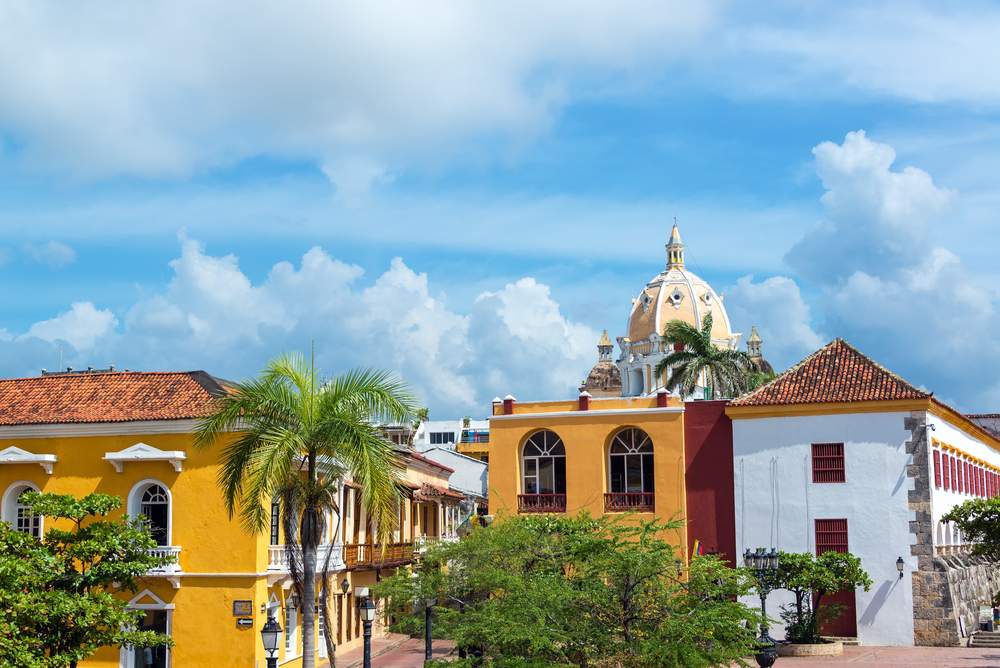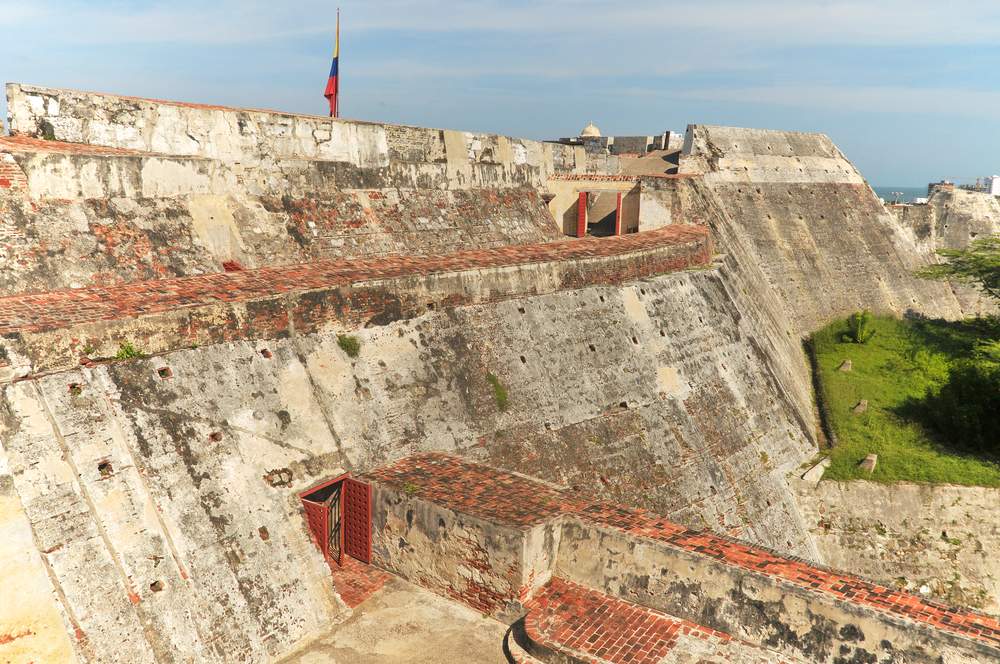We’d been skirting the Caribbean for at least ten minutes. Only a narrow stretch of land separated the turquoise waters from imposing 16th century walls that protected the heart of Cartagena.
“At present, the land served as a highway leading into the Old Town, but I could imagine the fruitless efforts of would-be conquerors of centuries past.”
We finally turned left and passed under a narrow archway that served as a ten-foot interruption in the miles of stonework. As we began to navigate through the edge of Old Town, one thought was as clear as the piercing blue skies overhead: Márquez was no liar.
One of South America’s Most Charming Old Towns

In Cartagena’s Old Town the narrow sidewalks were no match for the heavy foot traffic, as a combination of street vendors, workers, and picture-taking tourists jostled for position.
My self-guided spontaneous walking tour led me through the Plaza de Bolivar, which ended up being my favorite reading spot in all of Cartagena. The plaza was packed with exotic plants and benches perfect for cozying up with a book. A local was hawking knock-off soccer jerseys as I entered through a set of wrought iron gates.
After admiring the statue of Simon Bolivar, I turned my attention to the adjacent Palacio de la Inquisición. The impressive Baroque-style façade drew me closer and the inviting air conditioned interior sealed the deal.
The hotel staff had mentioned one must-see: Plaza de la Aduana—the largest and oldest square in Cartagena. Since I hadn’t found it on my wander, I finally pulled out my map and made the quick five-minute journey, sidestepping an overeager coconut vendor along the way.
I reached the plaza and was greeted by a musical performance in the square. Teenagers in colorful ensembles were dancing to the beat of a lively band, a feat that even kept the local pigeon population at bay.
From there I made my way to the outer walls and took my opportunity to get a vantage point of the city from above. I caught a glimpse of the newer beachfront district, Bocagrande, complete with high-rise hotels and apartment buildings that would rival any waterfront locale in Miami.
Noticing the time, I set my sights on dinner—with the goal to find a restaurant that lacked glossy tourist menus and American music. My first day in this colorful town had been a success. Tomorrow, I would visit the huge stone fortress that dominated the horizon.
Getsemani and Castillo de San Felipe

My path took me out of Old Town and through the neighborhood of Getsemani. The scene is different here. A large urban park gives way to Cartagena’s hostel zone, where many of the city’s younger visitors congregate.
Look a little closer, however, and the tourist traps of Old Town have been replaced with a mix of trendy bars, a few dives, and locals going about their daily routine. The short ten-minute walk was well worth foregoing a cab ride.
I left Getsemani and made my way to the fortress. A steep pathway led up to the entrance and the urge to stop and take pictures was a battle I often lost. Simply walking around the top of the fortifications took close to an hour, with expansive views at every turn.
I finally made my way back into Old Town. I was tempted to go out and explore the local beaches, yet another afternoon spent inside the city walls proved too tempting.
I grabbed a book and returned to the Plaza de Bolivar. This time, I gave short nod to the jersey salesman. I settled into a park bench and opened up a collection of Marquez’s short stories. When in Cartagena…
Like this story? Sign up for the Daily Dose and get more BootsnAll in your inbox.
Matt Milloway is a freelance writer currently based in South Florida. His travels have taken him to Peru, Colombia and various countries across Europe–highlights for him were time spent in Poland and Hungary.
Photo Credits: alexmillos, Jess Kraft, meunierd.